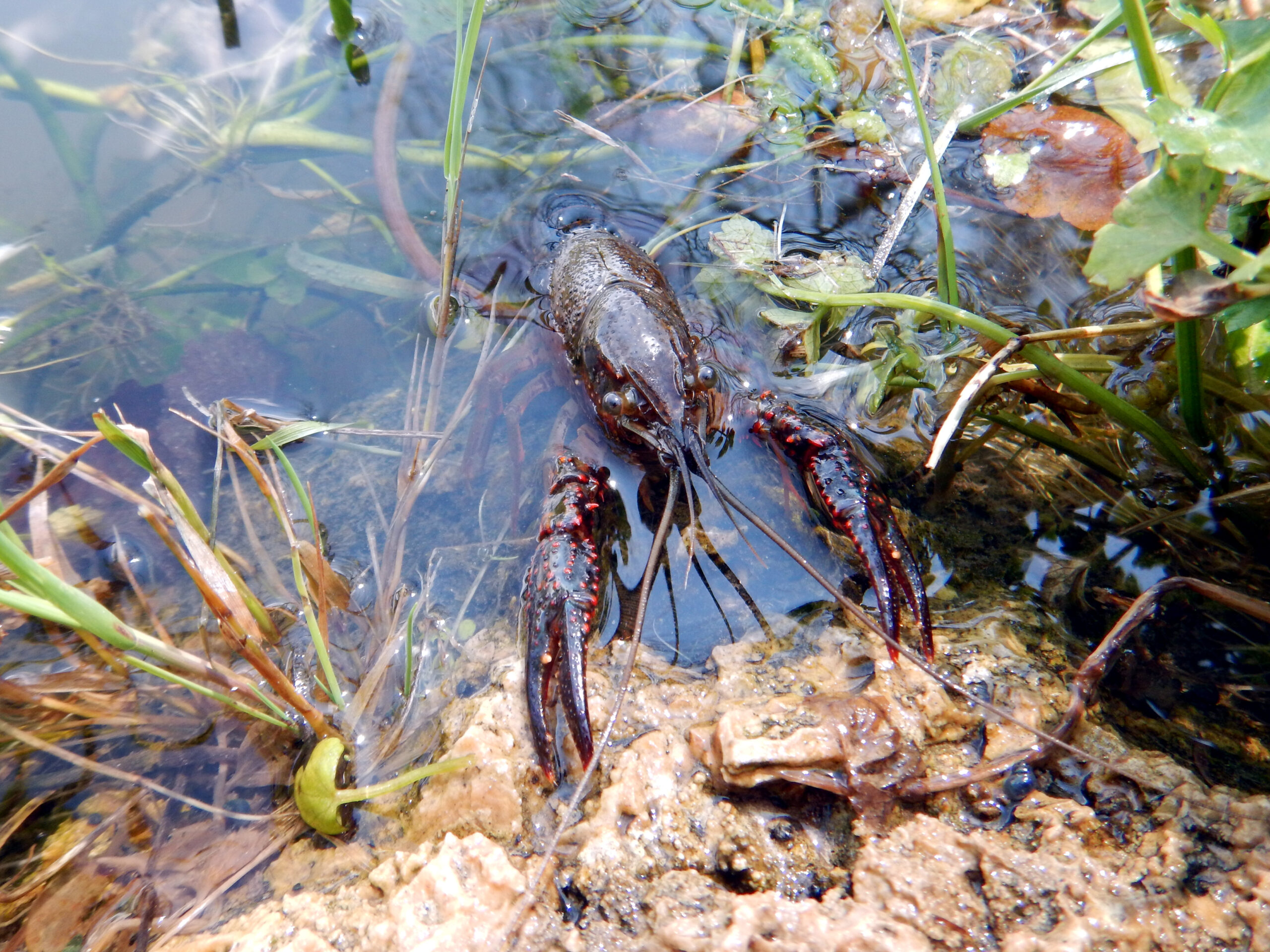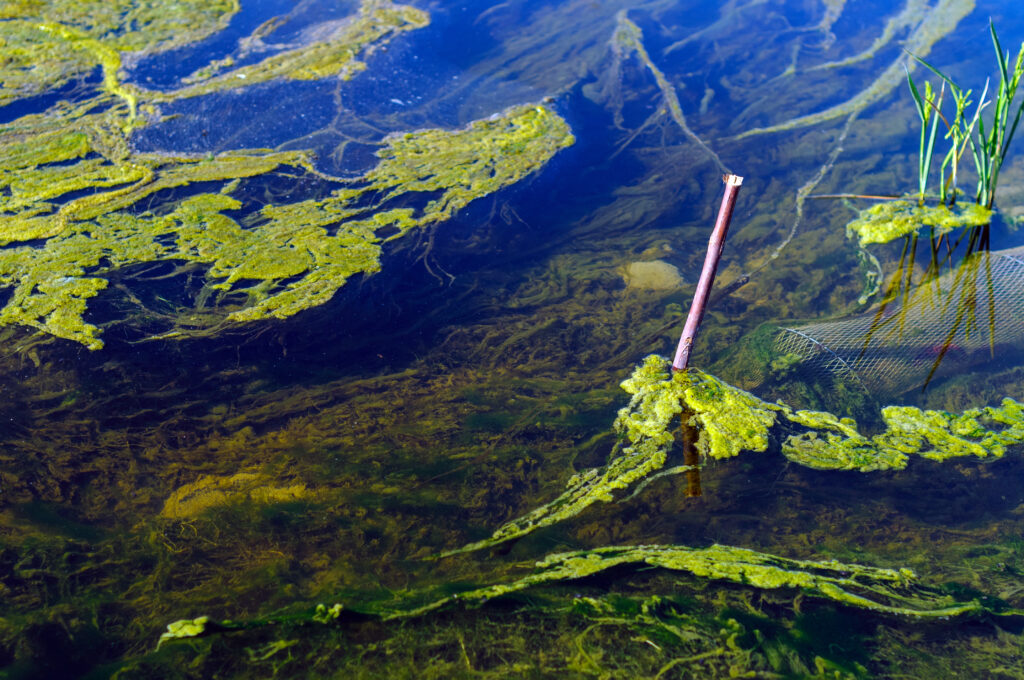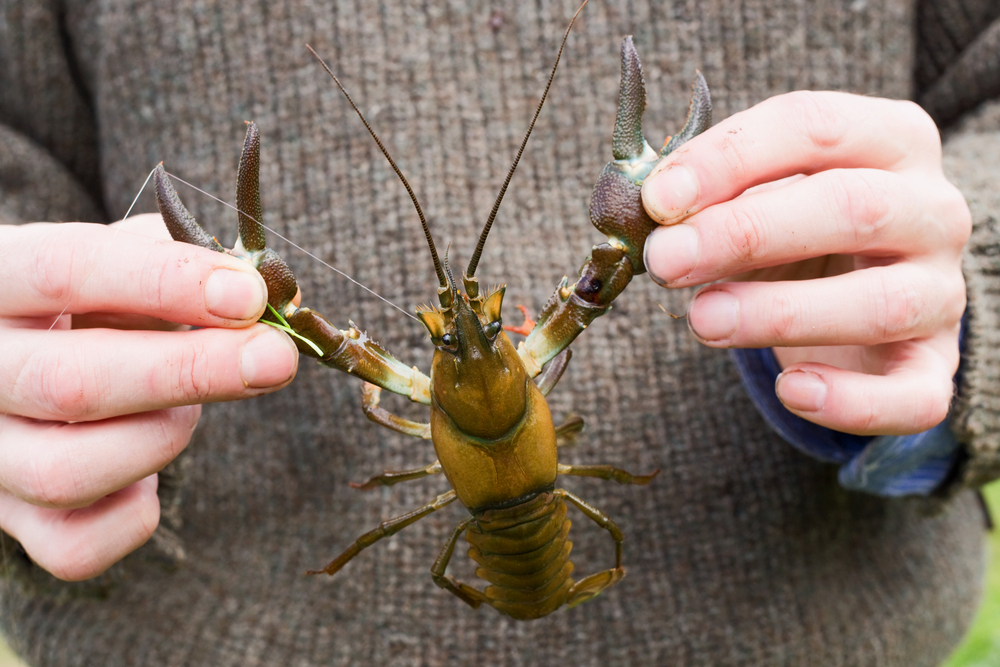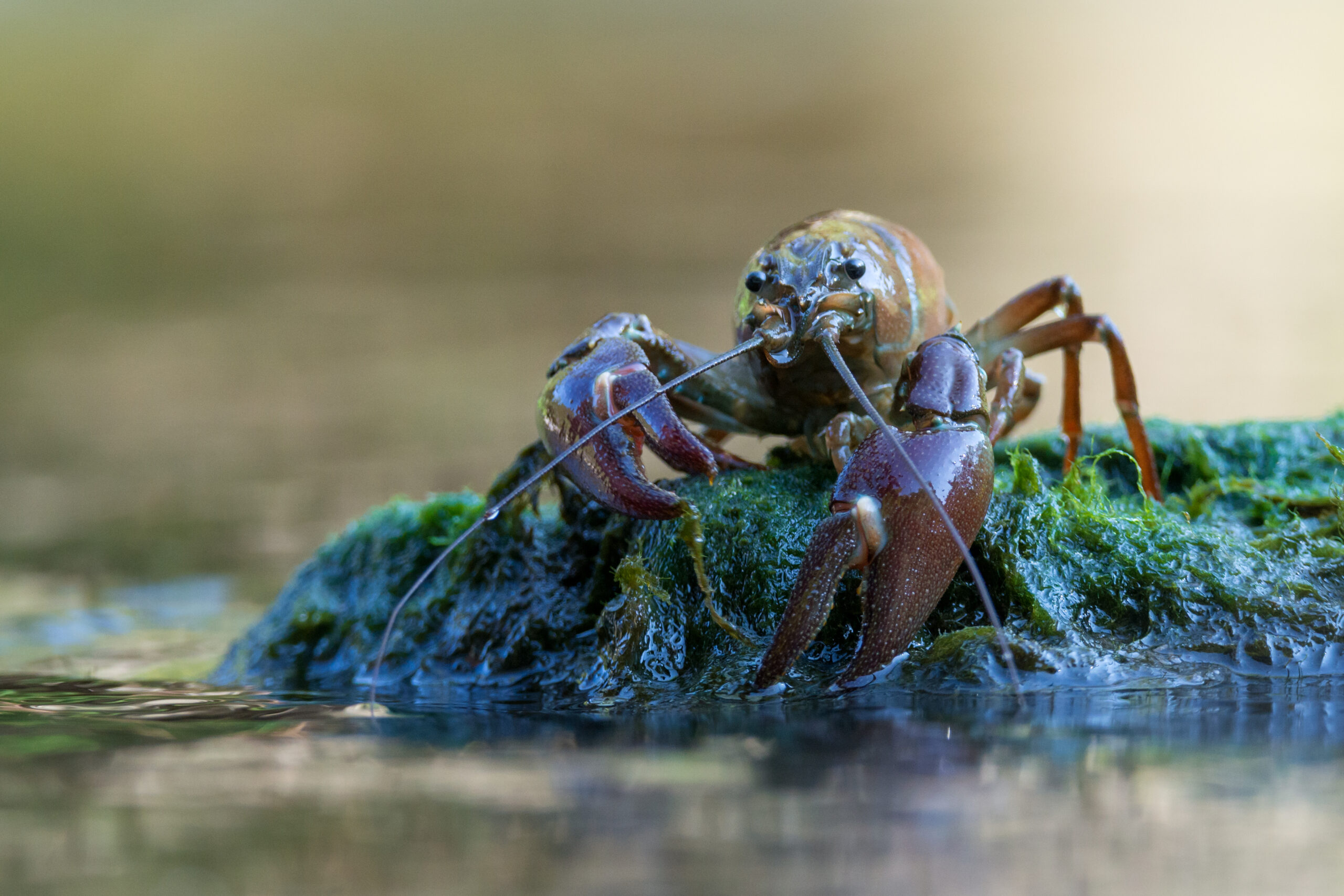The white-clawed crayfish is fully protected by UK and European law.

The white-clawed crayfish is a freshwater, bronze-coloured crustacean with pale undersides to its claws – hence the name.
As the UK’s only native freshwater crayfish, it is in decline due to the introduction of the non-native North American signal crayfish. This invasive species has brought disease to which our indigenous crayfish has no natural resistance. An omnivorous crustacean, the white-clawed crayfish eats invertebrates, carrion, water plants and dead organic matter. White-claws inhabit small freshwater streams of a depth less than 1 metre, hiding underneath stones and rocks and in small crevices where they forage for food in the UK’s rivers, canals, streams and quarry pools.
When is the right time to carry out a white-clawed crayfish survey?
If historic distribution records indicate that there may be a population of present, it may be necessary to carry out surveys of the site. Surveys need to be undertaken outside of their breeding season, which is from July to September. Late May and June is also avoided, when females may be carrying newly hatched young.
How can Ecology Resources help?
This page is just an introduction. We offer free advice regarding all crayfish survey matters, including how your project may be affected by their presence, or how you can tweak you project design to ensure a biodiversity net gain is achieved. To discuss further, feel free to ring us during office hours or email us at anytime.
A few examples of crayfish projects we have successfully delivered for our clients

Rutland

River Tame, Oxfordshire


